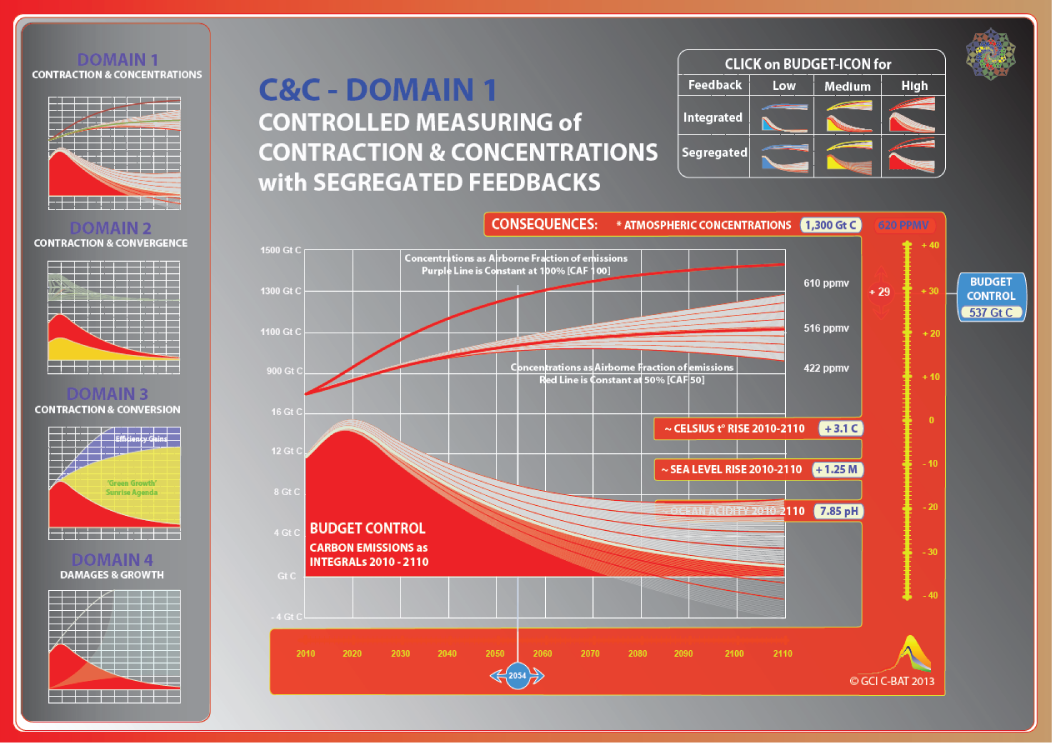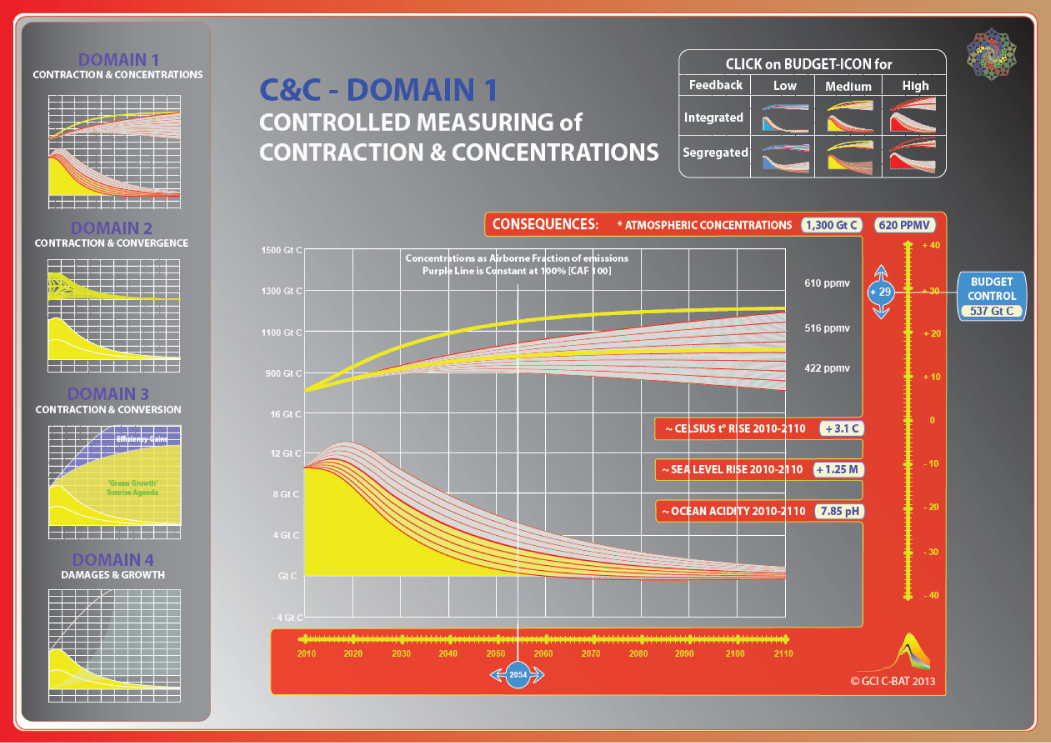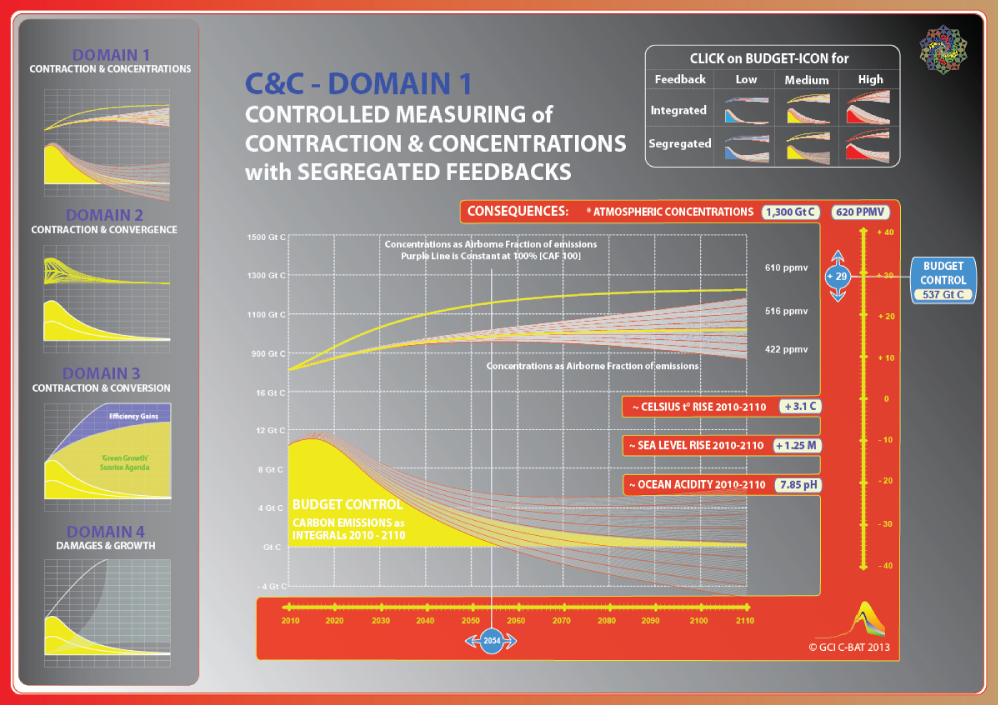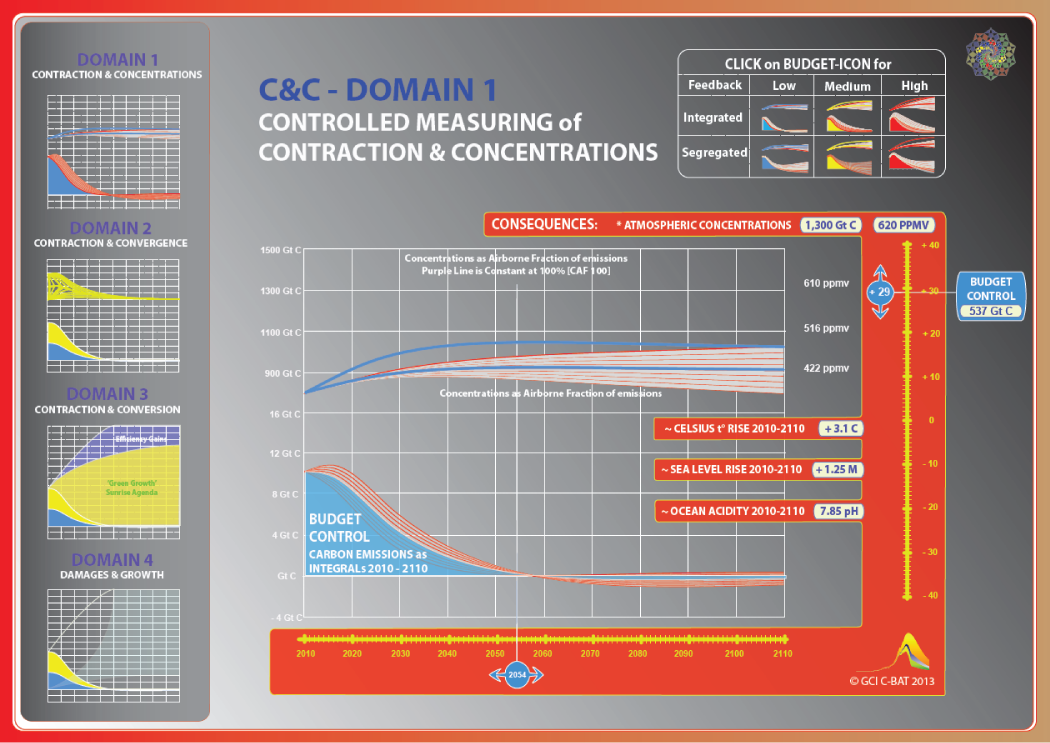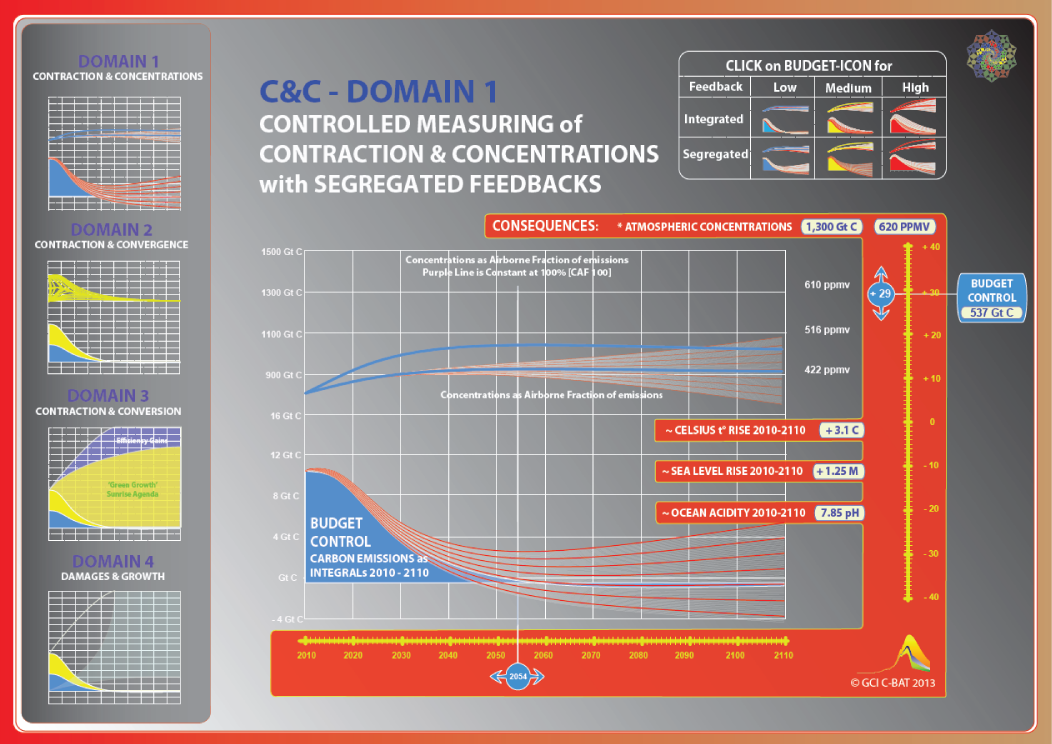

CBAT - the Carbon Budget Anaysis Tool - elaborates the C&C principle rooted in Nature.
Progress update (2016) on CBAT here
The detail of this work is still in progress . . . .
However, here in the meantime is a working draft of Domain One [annotations are added this weekend for Sunday 03 03 13 e-o-p].
Click on the picture below or here to get Carbon Budget Analysis Tool [C-BAT]
'Domain One - Contraction and Concentrations'Click on the picture above and see that 3 Emissions Budgets are used with integral-values ranged over 100 years at, above & below the UK Climate Act [UK-CA] as follows:
- High [593 Gt C]; 1.5 times the UK-CA this event is slower & takes us well above 2°
- Medium – [395Gt C]; exactly equal to UK-CA & this event was given 44% odds for 2°
- Low – [197 Gt C]; half the UK-CA this event has a 50:50 chance of meeting 2°
For reference, these budgets [red buttons top right] are coupled with Atmospheric Concentration curves setting a pair of ‘Constant Airborne Fraction’ [CAF] reference lines for each budget at CAF 50% accumulating half of the underlying budget and at CAF 100% accumulating the entire underlying budget.
To link emissions to concentrations by weight showing that a Tonne of Carbon is a Tonne of Carbon wherever it is [e.g. as fossil carbon underground, or entering the biological carbon-cycle e.g. as CO2 from the flue of a Power Station where a tonne has been burned, or as part of the consequent accumulation of carbon tonnes in the atmosphere & Ocean], in C-BAT all projection rates of Emissions & Concentrations are measured in Giga Tonnes of Carbon [Gt C] converting at 1 atmospheric Part Per Million by Volume [PPMV] = 2.13 Gt C, but also showing conventional ppmv values for atmosphere CO2.
Two generic approaches to projecting future Contraction/Concentrations events are compared [click red box of choice top right]: -
- Integrated, where human budget-emissions are not separated from non-human feedback emissions. Exhibiting the hybrid science/policy convention, as in the UK Climate Act for example where feedback-emissions have been opaquely mixed into the budgets and projected on the flawed assumption that these don’t need to be separated as they are ‘mostly human emissions’ and can be ‘controlled’, and
- Segregated, where human budget-emission are shown and have been separated from non-human feedback emissions, recognizing that the crucial points that: -
a. While we may have control over budget-emissions, we have no control over these feedback-emissions, and
b. Further, as the planet warms, these feedback-emissions will emerge on acceleration curves, and that
c. Even as human budget-emissions may decrease over time through ‘emissions-mitigation efforts’, feedback-emissions can and will increase and potentially overwhelm human efforts to mitigate human emissions, unless we schedule, control and eliminate the human emissions globally, altogether and soon.To address the fact that nobody [especially including ‘climate-modellers’] really knows: -
- What Budget for human Emissions might be adopted at UNFCCC, or
- What the acceleration/deceleration factor will be for feedback emissions as these emerge,
coupling further interactions with other forms of feedback or- What therefore the changing Fraction of emissions retention in the future atmosphere and oceans will be
a ‘User-Control-Slider’ [at the minute still just a blue button to click and drag on the right-hand side] for all three budgets and for both approaches [Feedback-Integrated & Feedback-Segregated] coupling emissions & concentrations, covering positive and negative feedback potential for all settings is provided, where there are: -
- 0 to +40 upward positions covering the potential for positive feedback emissions.
- 0 to -40 downward positions covering the potential for negative feedback emissions.
Some stills below in the meantime, showing slider-controls and derived values on indicator 'clocks': -


